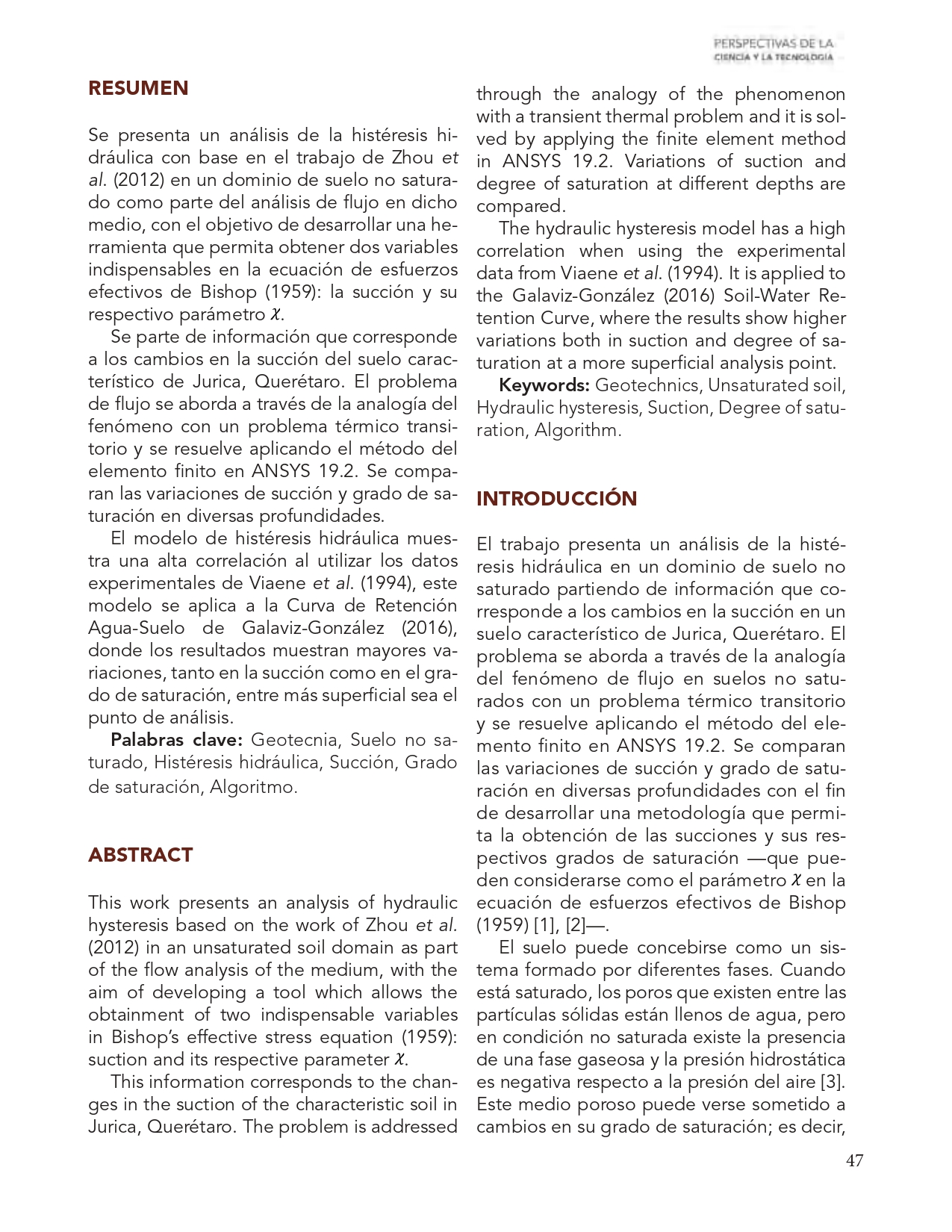Abstract
This work presents an analysis of hydraulic hysteresis based on the work of Zhou et al. (2012) in an unsaturated soil domain as part of the flow analysis of the medium, with the aim of developing a tool which allows the obtainment of two indispensable variables in Bishop’s effective stress equation (1959): suction and its respective parameter. This information corresponds to the changes in the suction of the characteristic soil in Jurica, Querétaro. The problem is addressed through the analogy of the phenomenon with a transient thermal problem and it is solved by applying the finite element method in ANSYS 19.2. Variations of suction and degree of saturation at different depths are compared. The hydraulic hysteresis model has a high correlation when using the experimental data from Viaene et al. (1994). It is applied to the Galaviz-González (2016) Soil-Water Retention Curve, where the results show higher variations both in suction and degree of saturation at a more superficial analysis point.
This work is licensed under a Creative Commons Attribution-NonCommercial 4.0 International License.

